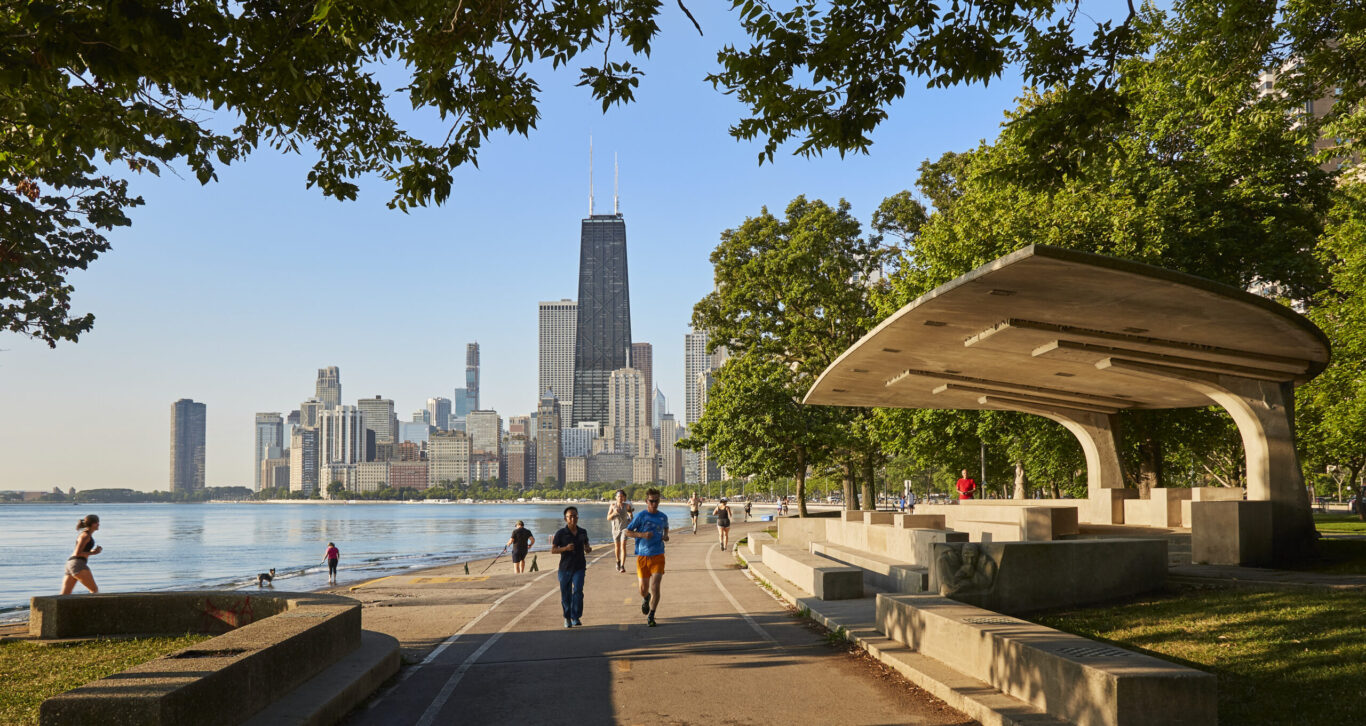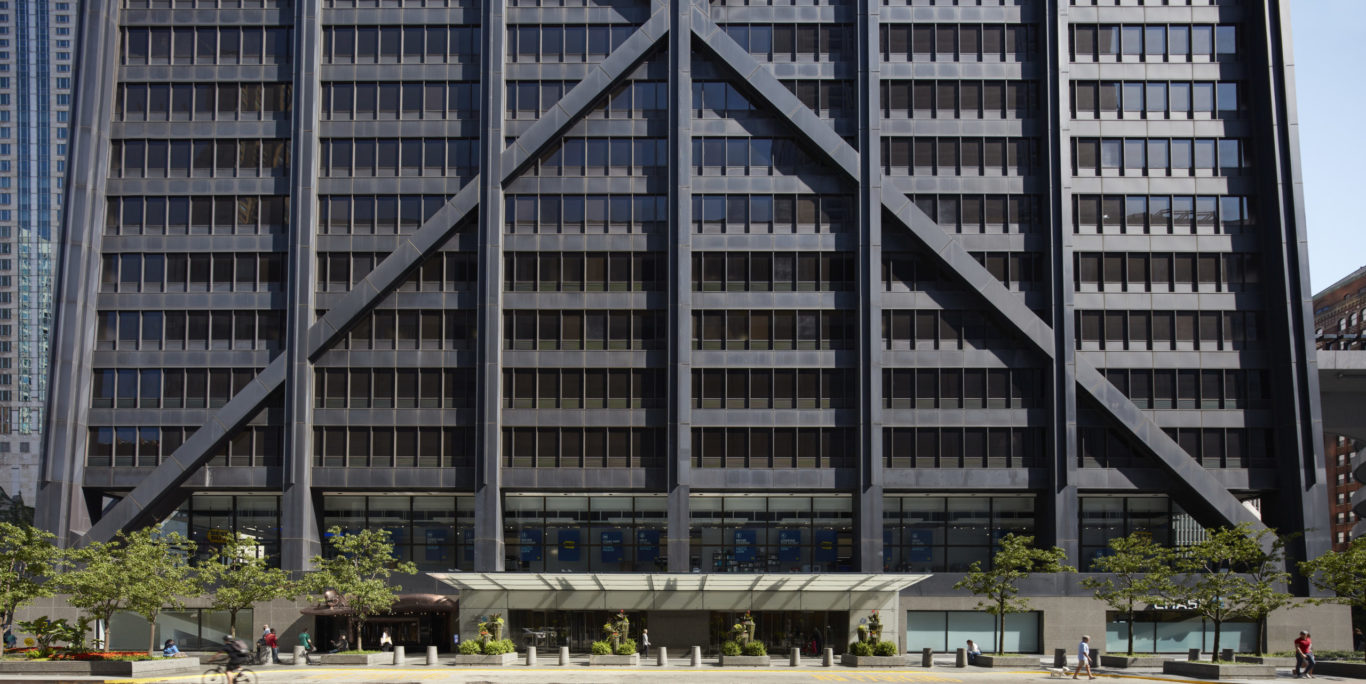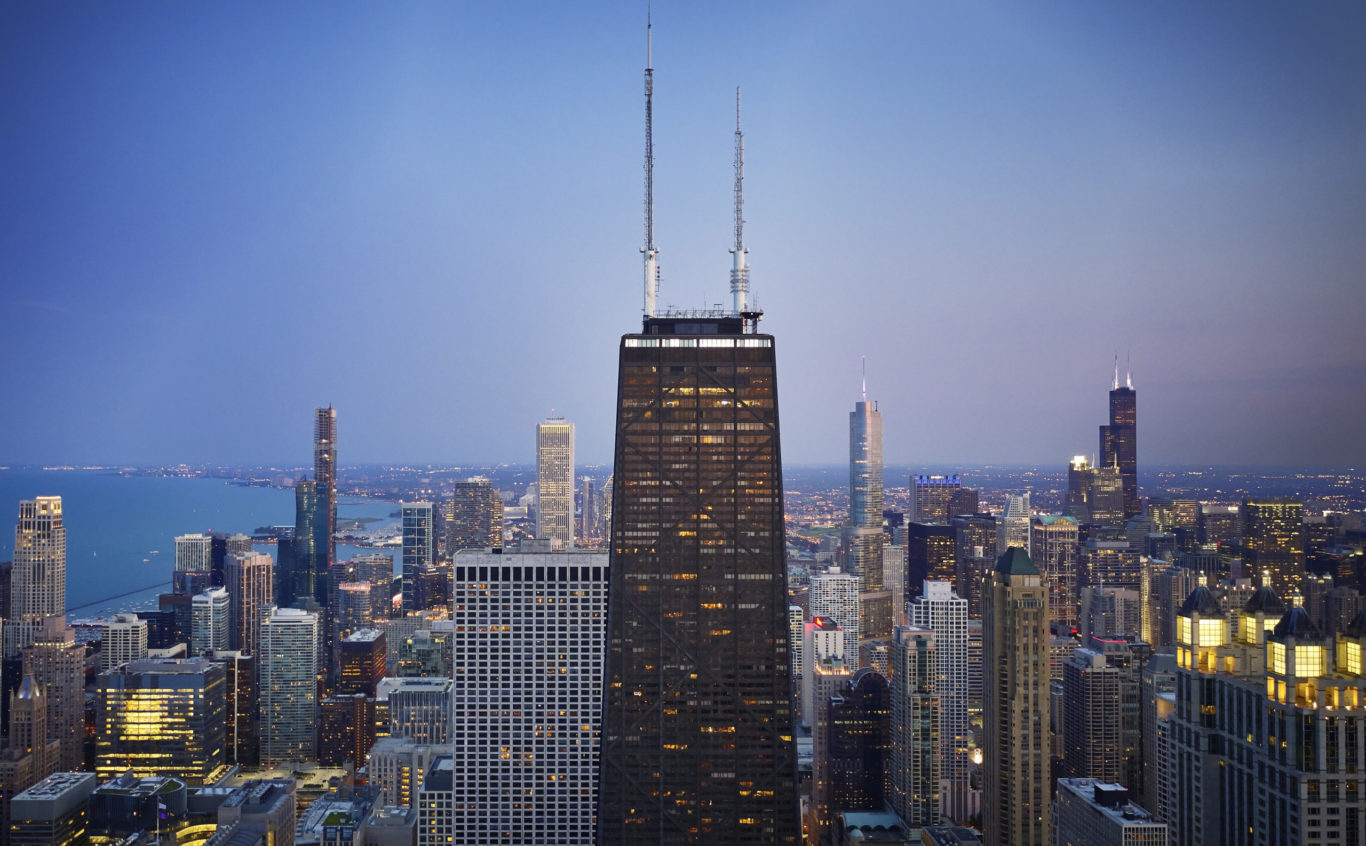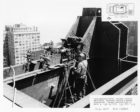Mixed-use goes vertical
875 North Michigan Avenue, formerly known as John Hancock Center, the world’s first mixed-use tower, is an architectural icon representing the close collaboration between architect Bruce Graham and structural engineer Fazlur Khan. The building remains an archetype for the collaborative ideal that continues to make SOM a leader in a wide spectrum of design disciplines.

Known locally as “Big John,” the tower is situated on North Michigan Avenue in a prestigious district with apartments, shops, offices, hotels, restaurants, and art galleries. The wish to continue this mixture initially gave rise to the idea of building a 70-story apartment tower and a 45-story office tower. But the two towers would have occupied most of the site and would have impaired each other’s privacy and daylight conditions. Moreover, the lower-level apartments would have suffered from noise nuisance from the street. It was therefore decided to construct a single tower where the offices would be on the lower floors and the apartments on the higher levels.
The tower’s tapered shape was chosen in order to match the different floor space requirements that decrease from bottom to top — from the entrance and commercial zones at the base to the clusters of small apartments at medium height and finally to the large apartments on top, where relatively less space is needed for ancillary rooms with artificial lighting.
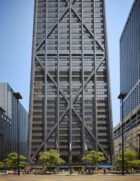
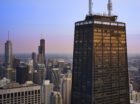
The John Hancock Center isn’t just important to Chicago; it’s important to city skylines across the world. When it was completed 50 years ago, it changed what architects and engineers thought was possible.
